Advocates, Saviors, and Haters – Oh My – How People Respond Rightly or Wrongly to Injustice
Advocates, Saviors, Complainers, Haters, and Bystanders: Understanding the Spectrum of Response to Injustice
Primary Category: Psychology of Scams
Intended Audience: All
Author:
• Tim McGuinness, Ph.D. – Anthropologist, Scientist, Director of the Society of Citizens Against Relationship Scams Inc.
• Based, in part, on the works of Jordan B. Peterson
About This Article
The SCARS Institute serves as a steadfast passionate advocate for scam victim-survivors, driven by the belief that empowerment, education, and collective action lead to lasting recovery and justice. Reflecting the ideals of the American Founding Fathers, SCARS upholds the values of active engagement, personal responsibility, and unwavering commitment to the welfare of those affected by scams. The organization distinguishes itself by challenging and confronting the disruptive forces that hinder progress—whether they manifest as self-promoting saviors seeking attention, haters and ragers consumed by destruction, or complainers paralyzed by frustration.
SCARS also recognizes the danger of apathy among bystanders and actively works to inspire action and engagement. By fostering healing, advocacy, and resilience, SCARS creates pathways for victims to regain control, transforming pain into purpose. In doing so, SCARS exemplifies the Founding Fathers’ vision of citizenship through service, standing as a beacon of hope and strength in the fight against scam victimization and injustice.
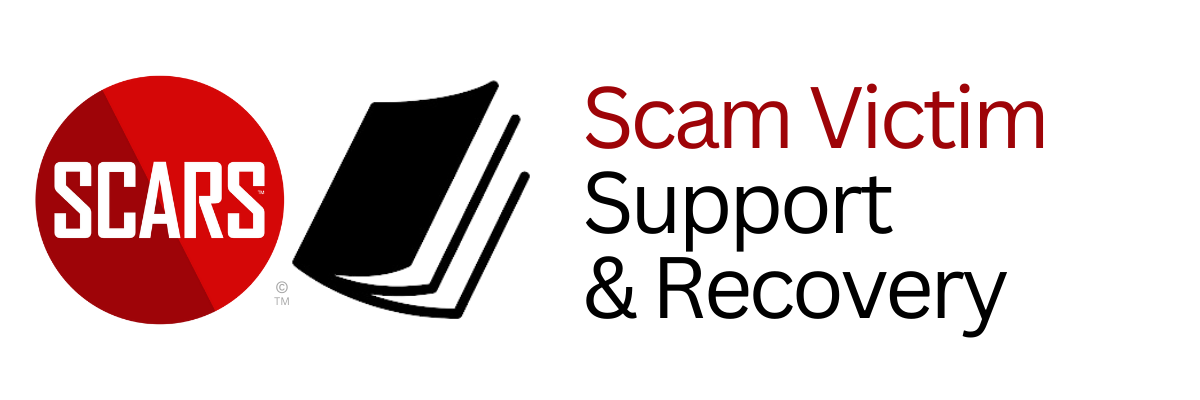
Advocates, Saviors, Complainers, Haters, and Bystanders: Understanding the Spectrum of Response to Injustice
When faced with societal problems, personal hardships, or injustice, people respond in diverse ways. Some rise to lead and empower, others exploit the moment, some complain without action, and others tear down or passively observe. The core differences between a passionate advocate, a self-promoting savior, a complainer, a hater/rager, and a bystander lie in their intentions, actions, and sense of responsibility. Understanding these roles is essential to creating collective progress and recognizing both constructive and destructive forces in communities.
Understanding Scam Victims’ Responses: A Framework for Compassion and Action
When someone falls victim to a scam, the emotional and psychological fallout can manifest in a variety of ways. Some victims emerge with a drive to advocate for others, determined to prevent similar harm. Others may become consumed by anger, lash out, or retreat into silence and isolation. Still, some may continuously revisit their pain without moving forward, while others stand by, feeling powerless to act. Understanding these diverse responses is important—not just for victims-survivors themselves but for friends, family, support groups, and society as a whole.
This framework outlines five distinct responses often seen in scam victims:
- The Passionate Advocate
- The Self-Promoting Savior
- The Complainer
- The Hater/Rager
- The Bystander
By examining these roles, we can gain insight into how victims process their trauma, why some channel their pain into constructive action while others may struggle or disengage. Recognizing these patterns allows us to:
- Provide better support to victims based on where they are in their recovery.
- Encourage empowerment and advocacy among survivors.
- Identify destructive behaviors that may hinder healing.
- Motivate passive victims to step forward and reclaim their sense of agency.
This framework also draws inspiration from Robert Heinlein’s concept of citizenship and responsibility in his book ‘Starship Troopers’, which emphasizes the value of service, accountability, and action. In the aftermath of a scam, victims are faced with a choice—how to respond to the injustice they have experienced. Understanding these roles not only enables empathy but also helps guide scam victims toward healing, resilience, and eventually, empowerment.
1. The Passionate Advocate – Driven by Purpose and Collective Good
“Your action expresses your priorities.” – Mahatma Gandi
“It’s the action, not the fruit of the action, that’s important. You have to do the right thing.” – Mahatma Gandi
“The root of suffering is attachment.” – Buddha
“Wheresoever you go, go with all your heart,” – Confusius
“People should pursue what they’re passionate about. That will make them happier than pretty much anything else.” – Elon Musk
“In times of personal turmoil, serving others gives life purpose.” – Tim McGuinness, Ph.D.
“Pursue what is meaningful (not what is expedient).” – Jordan Peterson
“What you aim at determines what you see.” – Jordan Peterson
A passionate advocate engages with genuine empathy and responsibility, working toward long-term, sustainable change. They act not for personal gain but for the benefit of others, driven by a belief in justice and fairness. Advocates collaborate, empower, and uplift, knowing that systemic change requires persistence and unity. Their focus is on solutions and growth, often leading by example without seeking recognition.
Key Traits:
-
- Works for the collective good without expectation of reward.
- Focuses on long-term solutions and systemic improvements.
- Invests in education, empowerment, and collaboration.
Driven by Purpose and Collective Good
The passionate advocate is the embodiment of resilience, empathy, and responsibility in the aftermath of victimization. While the pain and betrayal from being scammed can be overwhelming, advocates transform their experiences into fuel for positive action. Rather than being consumed by bitterness or self-pity, they direct their energy toward preventing future scams, educating others, and supporting fellow victims. Their primary motivation is rooted in a desire to protect others from experiencing the same harm they endured.
Core Motivations and Mindset
Passionate advocates are driven by a profound sense of duty and justice. They believe that their suffering has meaning if it can prevent even one other person from falling into the same trap. This drive often stems from:
-
-
- Empathy – Recognizing the shared vulnerability that all people have to deception and wanting to safeguard others.
- A Sense of Responsibility – Feeling morally compelled to act, often because they believe systemic change begins with individual contributions.
- Desire for Healing Through Action – Advocacy serves as a form of self-empowerment and healing. By actively addressing the issue, advocates regain a sense of control that the scam temporarily stripped away.
-
How Passionate Advocates Engage
Advocates are solution-focused and committed to long-term change. Their engagement takes many forms, often evolving as they grow more knowledgeable about scams and victim support. Common ways advocates contribute include:
-
-
- Raising Awareness – Educating others through social media campaigns, blogs, or public speaking to highlight scam tactics and empower communities.
- Peer Support – Offering guidance, emotional support, and resources to other scam victims through support groups, forums, or survivor networks.
- Collaboration with Authorities – Working with law enforcement, consumer protection agencies, or nonprofits to advocate for stronger protections and better resources for victims.
- Policy Advocacy – Engaging in efforts to push for legislative changes that hold scammers accountable and protect vulnerable populations.
- Community Building – Creating safe spaces for victims to share their stories, developing a sense of belonging and reducing the isolation often felt after being scammed.
-
Traits and Characteristics
Passionate advocates exhibit a range of qualities that set them apart:
-
-
- Resilience – They bounce back from adversity, using hardship as a springboard for growth.
- Empathy and Compassion – They connect deeply with others, offering support without judgment.
- Persistence – They recognize that systemic change takes time and are willing to stay the course, even when progress is slow.
- Humility and Collaboration – Advocates value collective effort, understanding that lasting change requires partnerships and diverse perspectives.
-
The Impact of Passionate Advocates
Advocates play a critical role in shifting the narrative around scam victimization. Their work helps break down the stigma and shame often associated with being scammed, reinforcing the idea that victims are not to blame. By enabling an open dialogue about scams, they create a culture where prevention and recovery become community efforts, not individual burdens.
In addition, their visibility and persistence can lead to:
-
-
- Greater Scam Awareness – Helping potential victims recognize red flags and avoid scams.
- Improved Resources for Recovery – Advocates often push for the creation of hotlines, victim compensation programs, and mental health services tailored to scam victims.
- Empowerment for Survivors – Seeing others turn their pain into purpose inspires more victims to step forward and engage in their own healing journeys.
-
Potential Pitfalls for Advocates
While advocacy is empowering, passionate advocates can sometimes face emotional burnout. Their deep empathy and personal connection to the cause can lead to:
-
-
- Overcommitment – Taking on too much responsibility and neglecting personal healing.
- Frustration with Slow Progress – Systemic change is often gradual, and advocates may feel disillusioned when results aren’t immediate.
- Emotional Drain – Constant exposure to others’ trauma can lead to compassion fatigue.
-
To mitigate these risks, advocates must practice self-care, set boundaries, and seek support from fellow advocates or mental health professionals.
A Reflection of Heinlein’s “Citizen” Ideal
The passionate advocate closely mirrors the concept of citizenship as described by Robert A. Heinlein in ‘Starship Troopers’. Heinlein’s vision of a citizen is someone who accepts personal responsibility for the well-being of the community, often through service and sacrifice. A passionate advocate embodies this principle by stepping forward to serve others, often without reward or recognition.
“A citizen accepts personal responsibility for the safety of the body politic, defending it with his life. A civilian does not.”
In this context, passionate advocates stand as guardians of the collective good, actively working to shield others from harm and strengthen the community. They are not passive observers but engaged participants, willing to dedicate time, energy, and personal experiences to protect society from scams and deception.
Why Passionate Advocacy Matters
Passionate advocates are the lifeblood of community resilience. In a world where scams are increasingly sophisticated and widespread, advocates act as beacons of hope and knowledge. Their efforts not only help individuals but also build a culture where fraud prevention, empathy, and recovery become shared societal priorities.
By supporting and amplifying the voices of passionate advocates, we can create safer environments, reduce scam victimization, and ensure that those who experience deception are met with understanding, resources, and pathways to reclaim their lives.
2. The Self-Promoting Savior – Driven by Ego and Recognition
“The best way to find yourself is to lose yourself in the service of others.” – Mahatma Gandi
“Wear your ego like a loose fitting garment.” – Buddha
“The superior man is modest in his speech but exceeds in his actions,” – Confucius
“I think that’s the single best piece of advice: constantly think about how you could be doing things better and questioning yourself.” – Elon Musk
“Compare yourself to who you were yesterday, not to who someone else is today.” – Jordan Peterson
The self-promoting savior mimics the behavior of an advocate but operates with personal recognition as the primary goal. While their actions may result in short-term visibility, their focus is more on image and status than lasting change. Saviors position themselves as the face of progress, often sidelining collective efforts or discrediting others to control the narrative. They frequently prioritize easy wins and superficial outcomes to draw attention, neglecting deeper, more complex issues.
Key Traits:
-
- Seeks praise and visibility for involvement.
- Prioritizes personal branding over collective progress.
- Avoids collaboration to ensure sole credit for solutions.
Emergence
The self-promoting savior emerges in response to injustice or victimization, portraying themselves as the central figure in solving the problem. Unlike passionate advocates, whose focus remains on uplifting others and creating systemic change, self-promoting saviors are primarily motivated by the desire for recognition and personal validation but are a mental disorder driven by fear and the desperate need to control their world.
While their actions may initially seem helpful, their involvement often becomes more about visibility and self-importance than the well-being of those they claim to help.
At the core of this behavior lies Savior Syndrome or the Messiah Complex—a psychological pattern where individuals feel an overwhelming need to “rescue” others, believing they are the only capable solution to the problem. Although this drive may stem from a genuine desire to help, it often becomes counterproductive and harmful, both to the savior and the community they engage with.
Understanding Savior Syndrome (Messiah Complex)
Savior Syndrome reflects an exaggerated sense of responsibility and self-worth tied to the act of helping others. This belief convinces the individual that without their intervention, progress or healing cannot occur. It’s not just about offering support—it’s about being the hero of the narrative. The savior’s identity and self-esteem become deeply linked to the perception of being needed by others.
Key Characteristics of Savior Syndrome:
-
-
- Overinflated Ego – A belief that they alone possess the skills or insight to address the issue.
- Boundary Overreach – Stepping into situations uninvited or exerting control over victims’ recovery processes.
- Dependency Cultivation – Encouraging victims to rely on them exclusively, creating unhealthy attachments.
- Inability to Share the Spotlight – Dismissing the contributions of others, often minimizing the importance of collective action.
- Validation Seeking – Publicizing their involvement to attract praise and attention, sometimes at the expense of the individuals they claim to help.
-
How Self-Promoting Saviors Engage
The self-promoting savior’s approach is characterized by performative actions that maximize visibility rather than effectiveness. They tend to gravitate toward high-profile moments, using emotional narratives to frame themselves as the linchpin of success stories. Their engagement, however, is often short-lived, driven by the opportunity for personal acclaim rather than sustainable solutions.
In scam victim communities, self-promoting saviors may:
-
-
- Center Themselves Publicly – Constantly telling their own victim story while overshadowing others, reinforcing the belief that their experience is the most important.
- Discourage Collaboration – Treating other advocates or organizations as rivals instead of partners, viewing shared credit as a threat to their image.
- Claim Sole Credit – Presenting victories as the result of their singular efforts, ignoring the contributions of larger support networks or group initiatives.
- Exploit Victims’ Stories – Amplifying the suffering of others not to empower them but to gain followers, sympathy, or media attention.
- Create Dependency – Positioning themselves as the only trusted source of guidance, discouraging victims from seeking professional help or joining broader recovery networks.
-
The Dangers of Self-Promoting Saviors
While self-promoting saviors can bring temporary relief or awareness, their behavior often introduces long-term risks to both themselves and the communities they engage with.
Dangers to the Savior:
-
-
- Burnout and Emotional Exhaustion – When their identity is tied to constant validation through helping others, the inevitable setbacks or lack of appreciation can lead to deep disillusionment.
- Isolation from Peers – By rejecting collaboration or dismissing feedback, self-promoting saviors often alienate themselves from advocacy communities, losing vital support systems.
- Emotional Dependence – Saviors may subconsciously seek out victims to perpetuate their role, resulting in unhealthy emotional entanglements with those they try to help.
-
Dangers to Victims and Communities:
-
-
- Disempowerment – Victims are left feeling helpless and dependent, believing they cannot move forward without the savior’s direct involvement.
- False Hope and Unrealistic Solutions – Quick, performative gestures can mislead victims into expecting instant fixes, deepening disappointment when real recovery proves slower and more complex.
- Community Division – Self-promoting saviors often fracture collective efforts, engaging in competition instead of unity among victim support networks.
- Neglect of Systemic Change – By focusing on individual glory, saviors detract from broader, more challenging work necessary for long-term prevention and reform.
-
The Advocate vs. The Savior
The distinction between a passionate advocate and a self-promoting savior lies in intent and focus. Advocates work to empower others, placing the community’s needs above their own. They aim to equip victims with tools, ensuring that survivors can advocate for themselves over time. Saviors, by contrast, often unconsciously reinforce cycles of dependency, ensuring they remain essential to the solution.
Advocates ask:
-
-
- “How can I help victims reclaim their power?”
-
Saviors ask:
-
-
- “How can I make sure they remember that I saved them?”
-
This difference is subtle but profound, shaping how victims view their path forward. Advocates walk alongside victims, while saviors attempt to lead from the front, casting long shadows behind them.
Shifting from Savior to Advocate
For those who recognize elements of Savior Syndrome in their behavior, there is room for growth. By shifting focus from ego to empowerment, individuals can redirect their energy toward true advocacy, avoiding the pitfalls of self-centered engagement.
Steps to Realign:
-
-
- Acknowledge Collective Effort – Recognize and celebrate the contributions of others. Advocacy is rarely the work of one person.
- Empower, Don’t Rescue – Focus on teaching skills and providing resources, allowing victims to regain autonomy rather than developing dependence.
- Seek Constructive Feedback – Welcome input from peers and victims, adjusting your approach to align with what the community truly needs.
- Respect Boundaries – Avoid over-involvement by allowing victims space to make their own decisions and mistakes.
- Shift Focus to Long-Term Impact – Invest time in systemic solutions, even if they lack immediate visibility or praise.
-
While the self-promoting savior may appear beneficial at first, their involvement often comes at a cost. The distinction between empowering and rescuing is essential in scam victim communities. Real healing and progress stem from uplifting survivors, not centering individual egos. By recognizing the dangers of Savior Syndrome and adjusting their approach, individuals can transition from performative helpers to genuine advocates, creating lasting change and resilience for scam victims and beyond.
3. The Complainer – Driven by Frustration Without Action
“An ounce of practice is worth more than tons of preaching.” – Mahatma Gandi
“Complaining is a habit; but the frightening thing about complaining is that every time we do, a cloud descends over our heart, and our hope, appreciation and joy gradually wane.” – Buddha
“When we see men of a contrary character, we should turn inwards and examine ourselves,” – Confucius
“I don’t create companies for the sake of creating companies, but to get things done.” – Elon Musk
“It’s in responsibility that most people find the meaning that sustains them through life. It’s not in happiness. It’s not in impulsive pleasure.” – Jordan Peterson
Complainers are adept at identifying flaws but lack the drive to engage in meaningful solutions. They voice dissatisfaction but remain inactive, expecting others to address the problems they highlight. While their observations can occasionally bring awareness, complainers rarely move beyond verbal critique. This lack of action reinforces stagnation and frustration, often leaving complainers feeling disempowered and disconnected from the possibility of change.
Key Traits:
-
- Highlights problems but avoids taking initiative.
- Expresses pessimism or believes change is unlikely.
- Relies on others to act rather than engage personally.
Driven by Frustration Without Action
The complainer represents a common yet often overlooked response to victimization and injustice. Unlike advocates or saviors, complainers voice dissatisfaction and highlight problems but stop short of taking meaningful action to address or resolve the issue. Their engagement is limited to verbal expression—venting, criticizing, or lamenting the situation—without following through on steps that could lead to change or healing.
While their frustration may be valid, complainers remain stuck in cycles of negativity, unable or unwilling to transition from identifying problems to actively seeking solutions. This can stem from disillusionment, burnout, or a belief that efforts will ultimately be futile. However, their continued focus on grievances can reinforce feelings of powerlessness, perpetuating emotional stagnation.
Core Motivations and Mindset
Complainers are often driven by a mix of anger, disappointment, and helplessness. They may recognize systemic failures, personal injustices, or harmful patterns but feel overwhelmed by the complexity of resolving them. In some cases, the complaining becomes a coping mechanism, offering temporary relief by externalizing blame and frustration.
Key Motivations Behind Complaining:
-
-
- Frustration and Disillusionment – Repeated negative experiences or a lack of progress creates deep-seated resentment toward institutions, systems, or individuals.
- Desire for Validation – Complaining can be a way to seek acknowledgment from others, validating their experience and reinforcing the idea that they were wronged.
- Lack of Confidence or Resources – Complainers may feel incapable or unequipped to enact change, believing they lack the skills, influence, or knowledge to improve the situation.
- Fear of Failure or Rejection – The fear that action may lead to further disappointment or ridicule often holds complainers back from taking risks.
-
How Complainers Engage
Complainers may participate in conversations or online forums where they consistently highlight the negative aspects of situations without suggesting or embracing solutions. Their engagement often lacks proactivity and reflects cynicism or distrust toward those attempting to solve problems.
In scam victim communities, complainers may:
-
-
- Dwell on the Scam Experience – Repeatedly reliving the scam, focusing on what went wrong without exploring paths to recovery.
- Criticize Support Efforts – Express dissatisfaction with victim support organizations, scam prevention programs, or legal processes but avoid contributing to improvements.
- Blame Authorities or Institutions – Shift responsibility to governments, platforms, or law enforcement, reinforcing the belief that nothing can be done.
- Engage in Group Negativity – Align with other complainers, fostering echo chambers where grievances are shared but no solutions are pursued.
-
Why Complainers Get Stuck
Complainers often feel paralyzed by the scale of the problem, leading to inaction. They may perceive their situation as beyond repair, feeding into a sense of hopelessness and stagnation. Additionally, the act of complaining can create a feedback loop where negative emotions are continuously reinforced, making it harder to shift into a proactive mindset.
Reasons for Inaction:
-
-
- Emotional Fatigue – Constantly revisiting grievances can lead to mental exhaustion, making it difficult to muster the energy for constructive action.
- Distrust of Institutions – After experiencing failure or neglect, complainers may develop mistrust toward systems designed to help, preventing them from seeking support.
- Identity Tied to Victimhood – For some, the experience of victimization becomes a core part of their identity, and moving forward might feel like losing that part of themselves.
-
The Impact of Complaining on Victims and Communities
For the Complainer:
-
-
- Emotional Stagnation – Continual focus on grievances without resolution reinforces feelings of helplessness, anger, and bitterness.
- Loss of Opportunities for Healing – By rejecting paths to recovery or refusing support, complainers prolong their suffering, preventing emotional closure.
- Social Isolation – Persistent negativity can alienate them from support networks, friends, and family who may feel drained by the lack of progress.
-
For the Community:
-
-
- Toxic Group Dynamics – In victim support groups, complainers can create pessimistic environments, discouraging others from seeking solutions or fostering hope.
- Reduced Momentum – When complainers dominate conversations, it can sabotage collective efforts for change, slowing down advocacy movements.
- Undermining Advocates – Complainers may discredit or diminish the work of passionate advocates, believing their efforts are futile or misguided.
-
The Hidden Potential of Complainers
Despite their lack of action, complainers possess valuable insights that can contribute to meaningful change. Their awareness of problems, attention to detail, and emotional connection to issues make them important observers of systemic failures. With the right guidance, complainers can transition into constructive roles as advocates, contributors, or support figures.
Pathways to Reengagement:
-
-
- Encouraging Small Steps – Helping complainers take incremental actions toward solutions can rebuild their confidence and shift their perspective.
- Creating Safe Spaces for Expression – Providing platforms where victims can vent without judgment allows for emotional release, paving the way for future empowerment.
- Highlighting Success Stories – Sharing examples of positive change reinforces the idea that progress is possible, inspiring complainers to shift toward advocacy.
- Offering Opportunities for Involvement – Encouraging complainers to volunteer or contribute to group efforts helps them move from critique to collaboration.
-
Turning Complaining into Advocacy
Many passionate advocates begin their journey as complainers. The shift occurs when frustration transforms into purposeful action. By recognizing the value of their insights and engaging with victim support networks, complainers can gradually develop into powerful voices for change.
Signs a Complainer is Ready to Transition into Advocacy:
-
-
- Expressing Curiosity – Asking about solutions or the experiences of others, signaling a desire to learn.
- Seeking Community – Expressing interest in joining survivor groups, forums, or events.
- Offering Ideas – Suggesting improvements, even if small or tentative.
- Supporting Others – Shifting from focusing solely on their grievances to offering empathy or advice to fellow victims.
-
Complainers play a significant yet often misunderstood role in communities affected by injustice or victimization. While their inaction can perpetuate frustration and negativity, it also reflects deep emotional investment in the issues they face. By recognizing the hidden potential within complainers and offering pathways toward constructive engagement, communities can help transform them into advocates, contributors, and valuable allies.
Empathy, patience, and small victories are key to unlocking this transformation, turning frustration into fuel for empowerment and healing.
4. The Hater/Rager – Driven by Anger and Destruction
“Anger is the enemy of non-violence and pride is a monster that swallows it up.” – Mahatma Gandi
“You will not be punished for your anger, you will be punished by your anger.” – Buddha
“When anger rises, think of the consequences,” – Confucius
“Life is too short for long-term grudges.” – Elon Musk
“Hating life, despising life – even for the genuine pain that life inflicts – merely serves to make life itself worse, unbearably worse.” – Jordan Peterson
Haters or ragers respond to injustice or hardship with anger and a desire to destroy. Unlike advocates who seek to build or saviors who seek recognition, haters focus on tearing down systems, attacking individuals, or discrediting efforts. This response stems from bitterness, resentment, or perceived betrayal. Haters thrive on conflict and antagonism, seeing opposition as a form of catharsis. However, their actions rarely lead to positive change, often resulting in division, fear, and erosion of trust.
Key Traits:
-
- Seeks to destroy rather than improve.
- Amplifies outrage and conflict without solutions.
- Contributes to toxicity and division within communities.
The Hater/Rager – Driven by Anger and Destruction
The hater or rager represents one of the most volatile responses to victimization and injustice. Unlike complainers, who dwell in frustration without taking action, or saviors, who seek recognition through performance, haters externalize their pain through aggression, blame, and destruction. Their response is reactionary and fueled by anger, often resulting in behaviors that are divisive, hostile, and counterproductive.
Haters may start with legitimate grievances but quickly move toward tearing down systems, individuals, or movements in ways that prevent progress or healing. Their focus is not on solving problems but on exposing flaws, criticizing efforts, and amplifying outrage. This path often alienates them from supportive communities, reinforcing isolation, bitterness, and a sense of injustice that festers over time.
Core Motivations and Mindset
At the heart of the hater/rager’s behavior is unresolved trauma and betrayal. The pain of being deceived, manipulated, or wronged can manifest as rage against perceived enemies—whether that’s scammers, institutions, or even fellow victims who represent alternative paths to recovery.
Key Motivations Behind Hatred and Rage:
-
-
- Betrayal and Violation – Scams often leave victims feeling deeply violated and exposed. This betrayal breeds anger that seeks external targets.
- Desire for Retaliation – Haters often crave revenge or some form of punishment for those who wronged them, even if the action is symbolic or misdirected.
- Sense of Powerlessness – Anger can provide a temporary sense of control in situations where victims feel powerless. Expressing rage may serve as a coping mechanism to mask vulnerability.
- Misplaced Justice – Believing that nothing will change through formal channels, haters often take matters into their own hands, seeking vigilante justice through personal attacks or public shaming.
-
How Haters/Ragers Engage
The hater’s engagement is disruptive and confrontational. They often position themselves in direct opposition to support groups, victim advocates, or institutions that are trying to help. While their critiques may highlight real issues, their aggressive approach undermines the collective effort to create solutions.
Common Behaviors of Haters/Ragers in Scam Victim Communities:
-
-
- Attacking Fellow Victims – Criticizing or belittling those who advocate for healing, accusing them of weakness or naivety.
- Undermining Support Groups – Disrupting discussions, dismissing shared advice, and spreading negativity that can fracture victim communities.
- Public Shaming and Harassment – Engaging in online attacks against scammers or even law enforcement agencies, often through social media campaigns or message boards.
- Refusing Reconciliation – Holding onto resentment even when opportunities for healing or compensation arise, perpetuating the belief that no resolution is acceptable.
- Sabotaging Positive Efforts – Attempting to derail advocacy efforts by questioning motives, spreading conspiracy theories, or suggesting that all systems are corrupt.
-
Why Haters/Ragers Get Stuck
Haters remain trapped in a cycle of anger and destruction because the act of tearing down becomes its own form of validation. Unlike advocates, who transform pain into purpose, or saviors, who seek praise, haters find identity and community in their outrage. This makes it difficult to break free from the pattern, as doing so often requires acknowledging the depth of their pain and vulnerability.
Reasons for Ongoing Hatred and Destruction:
-
-
- Emotional Avoidance – Directing anger outward helps haters avoid confronting internal grief or shame.
- Perceived Betrayal by Institutions – After reporting scams or seeking justice, victims may feel ignored or dismissed, leading to further distrust and rage.
- Lack of Closure – Scammers often go unpunished, leaving haters feeling robbed of justice, which fuels their ongoing resentment.
- Isolation Reinforcement – Haters often alienate those who might support them, reinforcing feelings of abandonment and division.
-
The Impact of Hatred on Victims and Communities
For the Hater:
-
-
- Erosion of Mental Health – Prolonged anger and destruction lead to increased stress, anxiety, and depression. The constant state of fight-or-flight damages emotional well-being.
- Isolation and Alienation – Haters often sever ties with support groups and loved ones, leaving them alone with their rage.
- Lack of Healing – By focusing exclusively on revenge or blame, haters miss out on opportunities for emotional recovery and growth.
-
For Victim Communities:
-
-
- Toxic Atmospheres – Haters introduce negativity and hostility into support environments, discouraging victims from engaging or seeking help.
- Division and Distrust – Communities fragment when haters attack advocates or leaders, reducing the effectiveness of collective action.
- Reduced Outreach and Engagement – Potential victims and supporters may avoid communities that feel combative or toxic, diminishing the broader effort to raise awareness.
-
The Potential for Transformation
Although haters are often seen as destructive, their passion and willingness to challenge systems can be redirected toward constructive advocacy. The key lies in shifting their focus from destruction to empowerment.
Pathways to Positive Transformation:
-
-
- Acknowledge and Validate Their Pain – Haters need to feel heard and understood. Recognizing the legitimacy of their anger can open the door to deeper conversations about healing.
- Channel Anger into Action – Encourage haters to engage in activism, policy reform, or educational outreach, giving their emotions purpose and direction.
- Build Bridges, Not Walls – Provide haters with opportunities for collaboration, showing them that meaningful change happens through unity, not division.
- Encourage Reflection and Therapy – Promote counseling or support groups where haters can process their trauma in healthier ways.
-
The Advocate vs. The Hater
The passionate advocate and the hater often start from the same place—pain and injustice. However, while advocates work to build solutions and empower others, haters dwell in blame and destruction.
Advocates ask:
-
-
- “How can I prevent others from experiencing this pain?”
-
Haters ask:
-
-
- “Who can I hold accountable for what happened to me?”
-
The shift from hater to advocate occurs when anger is no longer viewed as an endpoint but as a catalyst for positive action.
The hater/rager is a complex figure in the landscape of victim response. While their anger can be disruptive and harmful, it is ultimately rooted in deep emotional pain and a desire for justice. By understanding the motivations behind their behavior and offering pathways for transformation, communities can help haters transition from agents of destruction to advocates for change.
In doing so, we foster environments that encourage healing, collaboration, and the collective pursuit of justice—ensuring that anger becomes a stepping stone to empowerment rather than an obstacle to recovery.
5. The Bystander – Driven by Apathy or Fear
“You may never know what results come of your actions, but if you do nothing, there will be no results.” – Mahatma Gandi
“If we fail to look after others when they need help, who will look after us?” – Buddha
“To see what is right and not do it is want of courage,” – Confucius
“I could either watch it happen or be a part of it.” – Elon Musk
“To stand up straight with your shoulders back is to accept the terrible responsibility of life, with eyes wide open.” – Jordan Peterson
Bystanders represent the silent majority—those who observe injustice but choose not to engage. Their inaction may stem from fear of conflict, apathy, or the belief that their efforts won’t make a difference. While bystanders acknowledge problems privately, they refrain from contributing to solutions, hoping others will step in. Their passivity, however, often enables destructive forces by allowing problems to persist unchecked.
Key Traits:
-
- Avoids involvement even when aware of problems.
- Prioritizes comfort or self-preservation over action.
- Feels unqualified or powerless to make a difference.
Driven by Apathy or Fear
The bystander is perhaps the most silent and passive figure in the spectrum of responses to victimization and injustice. Unlike advocates, saviors, complainers, or haters, bystanders choose not to engage—either out of apathy, fear, or the belief that their involvement won’t make a difference. They observe the problem from the sidelines, sometimes expressing quiet sympathy but rarely stepping in to help or contribute to solutions.
While bystanders may not actively harm others, their inaction can perpetuate suffering by allowing injustice to persist unchallenged. In scam victim communities, this passivity can lead to delays in recovery, a lack of collective action, and a culture where silence indirectly protects scammers and prevents widespread awareness.
Core Motivations and Mindset
Bystanders are not inherently uncaring. Their disengagement often stems from internal barriers such as self-doubt, fear of conflict, or emotional exhaustion. Many bystanders feel they lack the power or influence to make meaningful contributions, while others avoid involvement to protect their own emotional stability.
Key Motivations Behind Bystander Behavior:
-
-
- Fear of Retaliation or Failure – Bystanders worry that involvement could expose them to further harm or social backlash.
- Emotional Overload – Some bystanders feel emotionally drained by their own experiences and believe they have nothing left to give.
- Lack of Confidence – They may doubt their ability to help, believing their actions would be insignificant or ineffective.
- Desire to Avoid Conflict – Bystanders often prefer to stay out of confrontations, even when they recognize the need for intervention.
- False Hope in Systems – Some trust that authorities, institutions, or other advocates will handle the issue, leading them to feel their participation is unnecessary.
-
How Bystanders Engage (Or Don’t)
Bystanders may offer verbal support or silent empathy but avoid deeper engagement. They may listen to victims, nod in agreement, and express frustration over injustices but fail to translate those feelings into action. This detachment allows scammers, harmful systems, and toxic behaviors to continue unchecked.
Common Bystander Behaviors in Scam Victim Communities:
-
-
- Silent Observation – Following online scam recovery groups or reading survivor stories without contributing or commenting.
- Limited Sympathy – Expressing condolences or regret in private but avoiding public advocacy or action.
- Avoiding Responsibility – Refusing to report scams, warn others, or engage with recovery efforts, believing “it’s not my place.”
- Passing the Buck – Encouraging victims to seek help elsewhere while avoiding personal involvement, often suggesting “someone else will handle it.”
-
Why Bystanders Remain Passive
Bystanders are often caught in a psychological state known as the bystander effect, where the presence of other people creates a diffusion of responsibility. The assumption is that someone else is better equipped to handle the situation, which leads to collective inaction.
Barriers to Engagement:
-
-
- Fear of Scams or Retaliation – Many bystanders worry that speaking out could make them a target, leading to personal harm or additional scams.
- Emotional Detachment – To protect themselves from reliving trauma, bystanders may choose to stay emotionally distant from victim communities.
- Feeling Overwhelmed by the Scale of the Problem – The complexity and prevalence of scams can make the issue feel too large to tackle, reinforcing passivity.
- Uncertainty About How to Help – Bystanders may feel ill-equipped or uninformed, unsure of where to start or how to offer support.
-
The Impact of Bystanders on Victims and Communities
For the Bystander:
-
-
- Lingering Guilt and Regret – Over time, bystanders may experience guilt or shame for not stepping in, particularly if the situation worsens.
- Missed Opportunities for Healing – Engagement can often lead to personal growth and healing. By staying disengaged, bystanders miss the chance to turn empathy into empowerment.
- Emotional Distance – Remaining passive can lead to a sense of disconnection from communities and shared efforts, reinforcing isolation.
-
For Victim Communities:
-
-
- Perpetuation of Injustice – The silence of bystanders creates a vacuum where scammers thrive and victims feel abandoned.
- Delayed Recovery for Victims – Without collective support, scam victims may feel isolated, delaying their emotional and financial recovery.
- Erosion of Community Strength – Passive bystanders weaken collective efforts, slowing down advocacy, prevention, and recovery initiatives.
-
The Hidden Potential of Bystanders
Despite their inaction, bystanders hold significant potential to become advocates or allies. Their empathy and awareness provide a foundation for deeper engagement once they overcome internal barriers. Often, a small push or invitation to contribute can inspire bystanders to step into active roles.
Pathways to Engagement:
-
-
- Providing Low-Stakes Opportunities – Invite bystanders to participate in small, manageable actions like sharing educational resources, attending webinars, or reposting scam warnings.
- Building Confidence Through Education – Equip bystanders with knowledge and tools to help them feel more confident in offering assistance.
- Creating Non-Confrontational Roles – Encourage participation in behind-the-scenes efforts, such as data collection, fundraising, or writing content for victim advocacy groups.
- Highlighting the Power of Collective Action – Show how even small contributions add up, reinforcing that every action matters.
-
Transforming Bystanders into Advocates
Bystanders can transform into advocates by shifting from passive sympathy to active empathy. This often requires:
-
-
- A Catalyst for Action – Personal experiences, seeing the impact of scams firsthand, or witnessing another victim’s suffering can inspire bystanders to get involved.
- Supportive Community Spaces – Bystanders thrive in welcoming, judgment-free environments where their contributions—no matter how small—are valued.
- Role Models and Mentorship – Seeing others step up can empower bystanders to follow their lead, reinforcing that anyone can make a difference.
-
The Advocate vs. The Bystander
The line between an advocate and a bystander is thinner than it appears. Many advocates start as bystanders, with engagement beginning in small, incremental steps.
Advocates ask:
-
-
- “How can I help, even in a small way?”
-
Bystanders ask:
-
-
- “Is it really my place to get involved?”
-
The shift from bystander to advocate often begins with simple acts of kindness, curiosity, or the realization that inaction contributes to the problem.
The bystander may not actively harm others, but their silence and passivity can reinforce cycles of victimization. In the context of scam victim communities, bystanders represent untapped potential—individuals who, with encouragement, can become powerful allies and advocates.
By addressing the fears and uncertainties that keep bystanders inactive, communities can activate their empathy, transforming them from silent observers into engaged participants in the fight against scams and injustice.
In doing so, we strengthen the collective fabric of victim support networks, ensuring that no one stands alone and that every voice contributes to recovery, prevention, and justice.
Heinlein’s Citizen Concept – A Model for Advocacy
In Starship Troopers, Robert A. Heinlein draws a sharp line between citizens and civilians. A citizen, Heinlein argues, is someone who takes responsibility for the collective welfare, often through service and personal sacrifice.
“A citizen accepts personal responsibility for the safety of the body politic, defending it with his life. A civilian does not.”
This distinction speaks to active engagement and accountability. True citizens, like passionate advocates, step forward to protect, build, and contribute. In contrast, civilians (or bystanders) benefit from the actions of citizens but remain detached from responsibility.
In Heinlein’s terms:
-
- The passionate advocate mirrors the citizen—engaged, selfless, and driven by duty.
- The self-promoting savior resembles a civilian who contributes selectively, seeking personal gain.
- The complainer parallels the disempowered civilian, aware but inactive.
- The hater/rager stands as a destabilizing force, counterproductive to the body politic.
- The bystander reflects the indifferent civilian, benefiting from society without contributing to its improvement.
Why This Framework Matters
Understanding these roles allows for better navigation of movements, leadership, and collective action. Societal progress hinges on active, engaged advocates—those willing to build, protect, and empower. By recognizing the motivations behind different types of engagement (or lack thereof), communities can:
- Cultivate leadership and empathy.
- Discourage toxic or destructive behavior.
- Mobilize bystanders into action through education and empowerment.
Heinlein’s philosophy of service and responsibility reminds us that progress is not achieved by standing on the sidelines. The call to action is clear—be a citizen, not a bystander.
Afterthought – A Uniquely American View
The American Founding Fathers frequently emphasized the importance of civic responsibility, personal engagement, and active participation in the welfare of the nation. Their writings and speeches underscore the belief that a healthy republic relies not just on governments, but on citizens who are informed, engaged, and willing to contribute to the common good. This perspective aligns closely with the concept of the passionate advocate and stands in contrast to the apathy, ego-driven behavior, or destructive tendencies represented by the savior, complainer, hater/rager, and bystander archetypes.
Civic Responsibility and the Passionate Advocate
The Founding Fathers envisioned a society where individuals actively work toward the betterment of their communities and nation. This is reflected in the passionate advocate—someone who engages constructively, leads by example, and seeks solutions through collective action.
-
-
- Thomas Jefferson believed in the necessity of an informed and educated citizenry. He famously stated:
“An educated citizenry is a vital requisite for our survival as a free people.”
Jefferson saw knowledge as the foundation of civic responsibility and advocated for continuous learning and engagement in public life. - George Washington in his farewell address warned of the dangers of apathy and divisiveness, emphasizing that citizens must guard the republic against threats by remaining united and involved:
“The preservation of the sacred fire of liberty… rests in the hands of the people.”
Washington’s words reflect the core belief that freedom and justice depend on active, ongoing participation by advocates willing to defend collective values. - James Madison highlighted the importance of watchfulness and accountability, noting that:
“The advancement and diffusion of knowledge is the only guardian of true liberty.”
Madison saw personal engagement and shared responsibility as the best defense against corruption and injustice.
- Thomas Jefferson believed in the necessity of an informed and educated citizenry. He famously stated:
-
These ideals align with the passionate advocate’s drive to empower others, engage in civic processes, and foster unity.
Critique of the Self-Promoting Savior
The Founding Fathers were deeply wary of self-aggrandizement, authoritarianism, and the pursuit of personal gain at the expense of collective welfare. The self-promoting savior, who prioritizes ego and recognition over genuine service, reflects the kind of leadership the Founders sought to prevent.
-
-
- John Adams warned against the dangers of individuals seeking power under the guise of public service:
“Because power corrupts, society’s demands for moral authority and character increase as the importance of the position increases.”
This sentiment reflects the belief that those who lead must do so with humility and selflessness, qualities often absent in the savior. - Benjamin Franklin frequently expressed concern about leaders who seek personal glory:
“He who falls in love with himself will have no rivals.”
Franklin’s wit reflects the danger of ego-driven leadership, a hallmark of the self-promoting savior, whose focus on recognition can undermine collective efforts. - Thomas Paine criticized performative leadership that fails to deliver real results:
“The world is my country, all mankind are my brethren, and to do good is my religion.”
Paine’s emphasis on doing good for the sake of others rather than personal gain stands in direct contrast to the savior’s tendency to centralize attention and create dependency.
- John Adams warned against the dangers of individuals seeking power under the guise of public service:
-
Critique of the Complainer
The Founding Fathers understood the importance of identifying problems, but they also emphasized the necessity of action and solutions. Complaining without contributing to solutions mirrors the stagnation that can paralyze communities and governments.
-
-
- Alexander Hamilton famously stated:
“Those who stand for nothing fall for anything.”
Hamilton’s call to engage with purpose challenges the complainer’s tendency to dwell in frustration without action. To the Founders, complaining without action weakened the republic and allowed threats to fester. - George Washington urged citizens to avoid excessive partisanship and finger-pointing, warning that division would lead to the decay of national unity:
“Guard against the impostures of pretended patriotism.”
Washington’s warning highlights how complainers can masquerade as concerned citizens while ultimately contributing little to progress. - Thomas Jefferson believed that action was the antidote to grievances:
“Do you want to know who you are? Don’t ask. Act. Action will delineate and define you.”
This reflects the need for forward momentum, challenging complainers to transform their frustration into advocacy and constructive efforts.
- Alexander Hamilton famously stated:
-
Critique of the Hater/Rager
The Founders were acutely aware of the destructive potential of unchecked anger and divisiveness. Haters and ragers, driven by a desire to tear down systems or people without offering solutions, represented a direct threat to the stability of the nation.
-
-
- James Madison warned against mob rule and emotional governance:
“Liberty may be endangered by the abuse of liberty, but also by the abuse of power.”
Madison’s caution reflects the danger of rage-driven activism that can undermine the very freedoms it claims to defend. - John Adams feared the chaos of unchecked anger in public discourse:
“A mob is no less a mob because they are with you.”
Adams recognized that anger, left unchanneled, leads to destruction rather than progress, mirroring the destructive path of haters. - Benjamin Franklin advocated for measured, thoughtful responses to injustice:
“Anger is never without a reason, but seldom with a good one.”
Franklin’s insight highlights how anger can easily spiral out of control, eroding trust and fragmenting communities.
- James Madison warned against mob rule and emotional governance:
-
Critique of the Bystander
Perhaps the most explicit warnings from the Founding Fathers were directed at those who remained silent in the face of injustice. The bystander, driven by apathy or fear, was seen as complicit in the erosion of liberty.
-
-
- Thomas Jefferson famously stated:
“All tyranny needs to gain a foothold is for people of good conscience to remain silent.”
Jefferson’s words reflect the danger of apathy and inaction, urging citizens to step up when injustice arises. - Samuel Adams expressed a similar sentiment:
“If ever a time should come, when vain and aspiring men shall possess the highest seats in Government, our country will stand in need of its experienced patriots to prevent its ruin.”
Adams highlights the importance of vigilance and involvement, directly challenging bystanders to engage in defense of the republic. - Patrick Henry’s famous declaration:
“Give me liberty, or give me death!”
Henry’s words reflect the belief that freedom demands personal sacrifice, and that silence in the face of oppression is tantamount to surrender.
- Thomas Jefferson famously stated:
-
The Founding Fathers’ emphasis on civic responsibility, engagement, and unity provides a powerful framework for understanding the different responses to injustice and victimization. Their writings align most closely with the passionate advocate—a citizen who steps forward to protect, build, and empower others.
Conversely, their critiques of ego-driven leaders, complainers, haters, and bystanders highlight the dangers that arise when individuals choose self-interest, negativity, destruction, or inaction over collective progress. By revisiting the principles laid out by the Founding Fathers, modern citizens can better understand their role in shaping a just and resilient society, reinforcing the timeless truth that democracy thrives when citizens engage with purpose and integrity.
Applying Jordan B. Peterson’s Views
In his works, Jordan B. Peterson emphasizes the importance of personal responsibility and self-improvement as foundations for contributing positively to society. He asserts that individuals should focus on bettering themselves before attempting to reform broader social structures.
In his book 12 Rules for Life, Peterson advises, “To stand up straight with your shoulders back is to accept the terrible responsibility of life, with eyes wide open.” [Goodreads]
This metaphor encourages individuals to confront life’s challenges directly and take ownership of their actions.
He also suggests that societal change begins with personal conduct: “If you cannot bring peace to your own household, how dare you try and rule a city?” [Leaders]
This highlights the necessity of establishing order in one’s personal life before seeking to influence the external world.
Peterson warns against the dangers of complacency and inaction, stating, “When you have something to say, silence is a lie.” [Goodreads]
This underscores the ethical obligation to speak out and take action when aware of issues, rather than remaining a passive bystander.
He further advises against self-deception and avoidance: “Stop saying those things that make you weak and ashamed. Say only those things that make you strong.” [Goodreads]
This encourages individuals to engage in honest self-reflection and communication, strengthening personal integrity and strength.
By focusing on self-improvement and personal responsibility, Peterson believes individuals can make meaningful contributions to society, moving beyond mere criticism to effect positive change.
SCARS Institute Summary
The SCARS Institute stands as a passionate advocate for scam victim-survivors, embodying the principles of empowerment, education, and collective healing.
In alignment with the values championed by the American Founding Fathers, the SCARS Institute believes that lasting change comes through active engagement, shared responsibility, and unwavering dedication to the well-being of victims.
SCARS Institute is unafraid to confront the self-promoting saviors who seek recognition over real progress, the haters and ragers who disrupt with anger but offer no solutions, and the complainers who dwell in frustration without action. While others may remain silent bystanders, SCARS Institute stands firm, providing clear pathways to recovery, advocacy, and resilience.
By sustaining a community rooted in compassion and strength, SCARS Institute empowers victims to reclaim their lives, reinforcing that true leadership lies in service, not ego.
| Category | Motivation | Focus | Outcome | Relationship to Action |
| Passionate Advocate | Collective good and empathy | Long-term change and empowerment | Positive, sustainable progress |
Engages deeply and consistently
|
| Self-Promoting Savior | Recognition and personal image | Quick, visible solutions | Superficial, often unsustainable |
Takes selective action for attention
|
| Complainer | Frustration and disempowerment | Highlighting problems | Little to no change | Rarely takes direct action |
| Hater/Rager | Anger and desire to destroy | Attacking people or systems | Division, conflict, and negativity | Destructive, often counterproductive |
| Bystander | Apathy, fear, or avoidance | Observing without engaging | Perpetuation of the status quo | Remains passive and uninvolved |
Please Rate This Article
Please Leave Us Your Comment Below
Also, tell us of any topics we might have missed.
-/ 30 /-
What do you think about this?
Please share your thoughts in a comment above!
A Note About Labeling!
We often use the term ‘scam victim’ in our articles, but this is a convenience to help those searching for information in search engines like Google. It is just a convenience and has no deeper meaning. If you have come through such an experience, YOU are a Survivor! It was not your fault. You are not alone! Axios!
-/ 30 /-
What do you think about this?
Please share your thoughts in a comment above!
ARTICLE RATING
TABLE OF CONTENTS
- Advocates, Saviors, Complainers, Haters, and Bystanders: Understanding the Spectrum of Response to Injustice
- About This Article
- Advocates, Saviors, Complainers, Haters, and Bystanders: Understanding the Spectrum of Response to Injustice
- Understanding Scam Victims’ Responses: A Framework for Compassion and Action
- 1. The Passionate Advocate – Driven by Purpose and Collective Good
- 2. The Self-Promoting Savior – Driven by Ego and Recognition
- 3. The Complainer – Driven by Frustration Without Action
- 4. The Hater/Rager – Driven by Anger and Destruction
- 5. The Bystander – Driven by Apathy or Fear
- Heinlein’s Citizen Concept – A Model for Advocacy
- Why This Framework Matters
- Afterthought – A Uniquely American View
- Applying Jordan B. Peterson’s Views
- SCARS Institute Summary
- A Note About Labeling!
CATEGORIES
U.S. & Canada Suicide Lifeline 988
![NavyLogo@4x-81[1] Advocates, Saviors, and Haters - Oh My - How People Respond Rightly or Wrongly to Injustice - 2025](https://scamsnow.com/wp-content/uploads/2025/04/NavyLogo@4x-811.png)
ARTICLE META
2 Comments
Leave A Comment
Important Information for New Scam Victims
- Please visit www.ScamVictimsSupport.org – a SCARS Website for New Scam Victims & Sextortion Victims.
- SCARS Institute now offers its free, safe, and private Scam Survivor’s Support Community at www.SCARScommunity.org – this is not on a social media platform, it is our own safe & secure platform created by the SCARS Institute especially for scam victims & survivors.
- SCARS Institute now offers a free recovery learning program at www.SCARSeducation.org.
- Please visit www.ScamPsychology.org – to more fully understand the psychological concepts involved in scams and scam victim recovery.
If you are looking for local trauma counselors, please visit counseling.AgainstScams.org
If you need to speak with someone now, you can dial 988 or find phone numbers for crisis hotlines all around the world here: www.opencounseling.com/suicide-hotlines
Statement About Victim Blaming
Some of our articles discuss various aspects of victims. This is both about better understanding victims (the science of victimology) and their behaviors and psychology. This helps us to educate victims/survivors about why these crimes happened and not to blame themselves, better develop recovery programs, and help victims avoid scams in the future. At times, this may sound like blaming the victim, but it does not blame scam victims; we are simply explaining the hows and whys of the experience victims have.
These articles, about the Psychology of Scams or Victim Psychology – meaning that all humans have psychological or cognitive characteristics in common that can either be exploited or work against us – help us all to understand the unique challenges victims face before, during, and after scams, fraud, or cybercrimes. These sometimes talk about some of the vulnerabilities the scammers exploit. Victims rarely have control of them or are even aware of them, until something like a scam happens, and then they can learn how their mind works and how to overcome these mechanisms.
Articles like these help victims and others understand these processes and how to help prevent them from being exploited again or to help them recover more easily by understanding their post-scam behaviors. Learn more about the Psychology of Scams at www.ScamPsychology.org
SCARS INSTITUTE RESOURCES:
If You Have Been Victimized By A Scam Or Cybercrime
♦ If you are a victim of scams, go to www.ScamVictimsSupport.org for real knowledge and help
♦ SCARS Institute now offers its free, safe, and private Scam Survivor’s Support Community at www.SCARScommunity.org – this is not on a social media platform, it is our own safe & secure platform created by the SCARS Institute especially for scam victims & survivors.
♦ Enroll in SCARS Scam Survivor’s School now at www.SCARSeducation.org
♦ To report criminals, visit https://reporting.AgainstScams.org – we will NEVER give your data to money recovery companies like some do!
♦ Follow us and find our podcasts, webinars, and helpful videos on YouTube: https://www.youtube.com/@RomancescamsNowcom
♦ Learn about the Psychology of Scams at www.ScamPsychology.org
♦ Dig deeper into the reality of scams, fraud, and cybercrime at www.ScamsNOW.com and www.RomanceScamsNOW.com
♦ Scam Survivor’s Stories: www.ScamSurvivorStories.org
♦ For Scam Victim Advocates visit www.ScamVictimsAdvocates.org
♦ See more scammer photos on www.ScammerPhotos.com
You can also find the SCARS Institute’s knowledge and information on Facebook, Instagram, X, LinkedIn, and TruthSocial
Psychology Disclaimer:
All articles about psychology and the human brain on this website are for information & education only
The information provided in this and other SCARS articles are intended for educational and self-help purposes only and should not be construed as a substitute for professional therapy or counseling.
Note about Mindfulness: Mindfulness practices have the potential to create psychological distress for some individuals. Please consult a mental health professional or experienced meditation instructor for guidance should you encounter difficulties.
While any self-help techniques outlined herein may be beneficial for scam victims seeking to recover from their experience and move towards recovery, it is important to consult with a qualified mental health professional before initiating any course of action. Each individual’s experience and needs are unique, and what works for one person may not be suitable for another.
Additionally, any approach may not be appropriate for individuals with certain pre-existing mental health conditions or trauma histories. It is advisable to seek guidance from a licensed therapist or counselor who can provide personalized support, guidance, and treatment tailored to your specific needs.
If you are experiencing significant distress or emotional difficulties related to a scam or other traumatic event, please consult your doctor or mental health provider for appropriate care and support.
Also read our SCARS Institute Statement about Professional Care for Scam Victims – click here
If you are in crisis, feeling desperate, or in despair, please call 988 or your local crisis hotline.
More ScamsNOW.com Articles
A Question of Trust
At the SCARS Institute, we invite you to do your own research on the topics we speak about and publish. Our team investigates the subject being discussed, especially when it comes to understanding the scam victims-survivors’ experience. You can do Google searches, but in many cases, you will have to wade through scientific papers and studies. However, remember that biases and perspectives matter and influence the outcome. Regardless, we encourage you to explore these topics as thoroughly as you can for your own awareness.



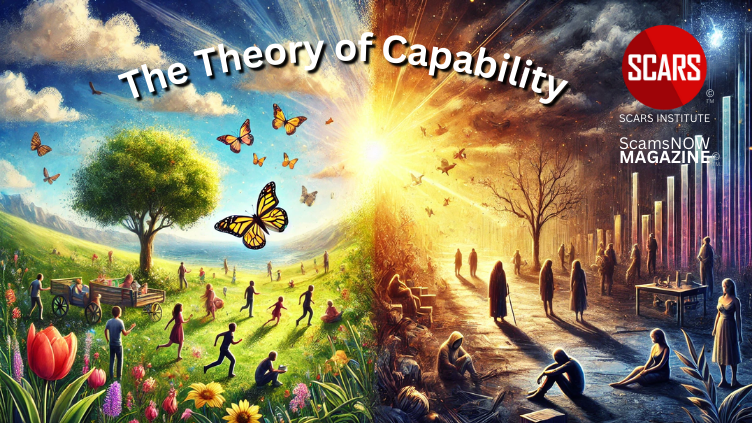
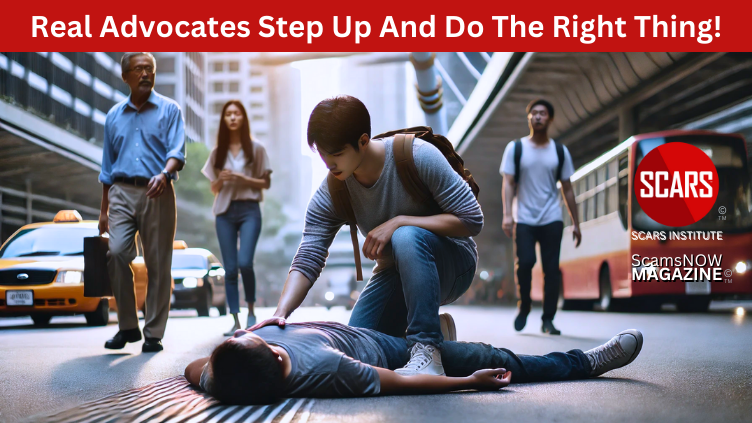

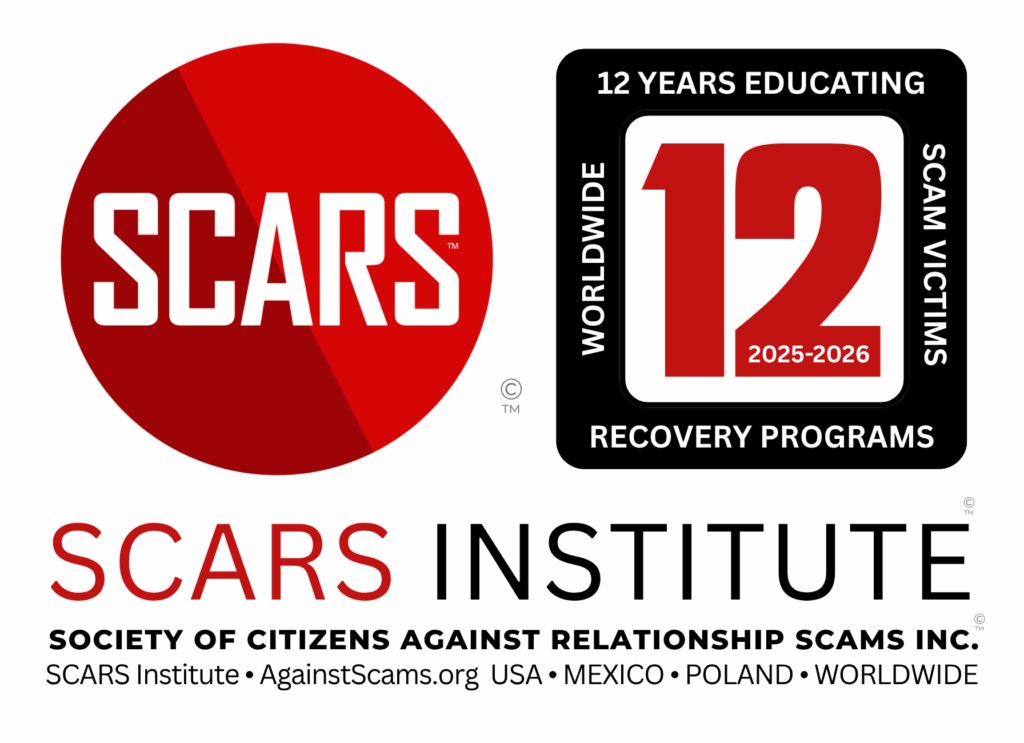
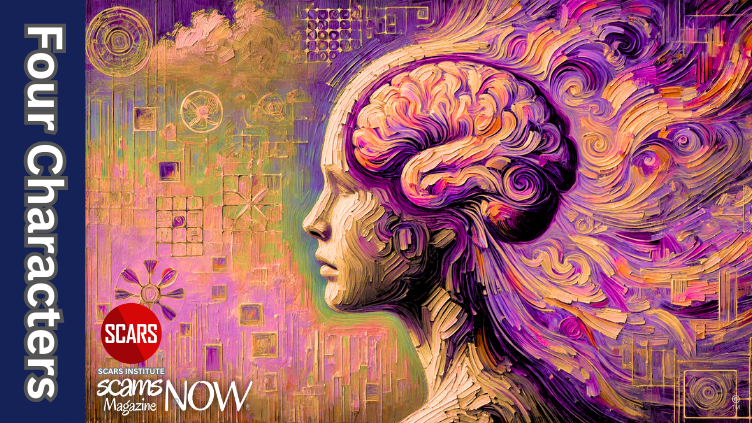

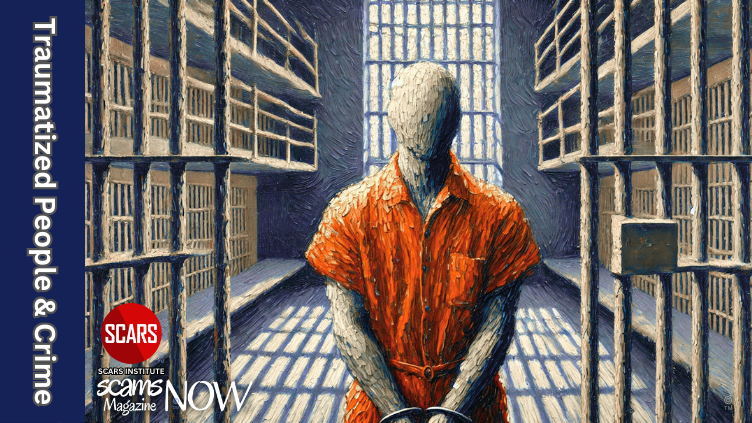





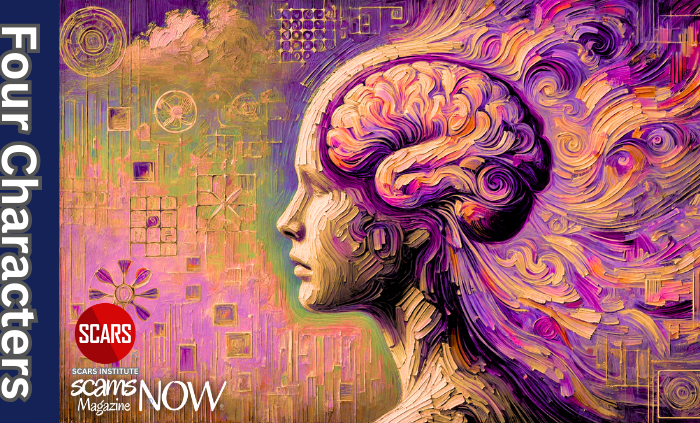

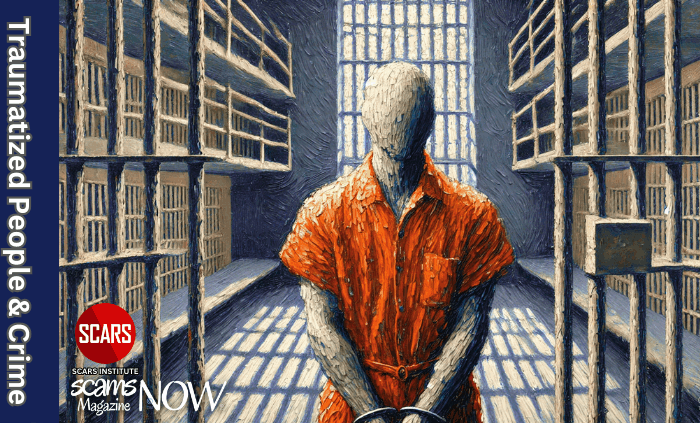





![scars-institute[1] Advocates, Saviors, and Haters - Oh My - How People Respond Rightly or Wrongly to Injustice - 2025](https://scamsnow.com/wp-content/uploads/2025/04/scars-institute1.png)
![niprc1.png1_-150×1501-1[1] Advocates, Saviors, and Haters - Oh My - How People Respond Rightly or Wrongly to Injustice - 2025](https://scamsnow.com/wp-content/uploads/2025/04/niprc1.png1_-150x1501-11.webp)

In any case, for any group showing different reactions, knowledge is key – it helps to reinforce good reactions, avoid, change bad ones.
I’m making the transition from the old self to not quite all the way new self. It is uncomfortable and strange. I still have a ways to go to heal and recover. After that, it’s my goal to help spread the awareness and support new victims. Being a part of the community has been a learning experience for me.